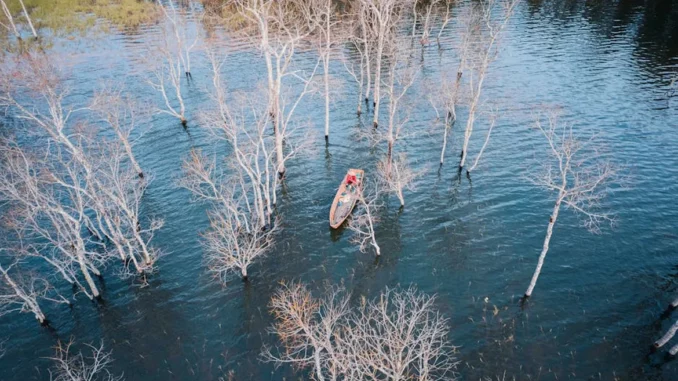
In the ever-evolving landscape of urban development, understanding the nuances of flood risk assessments is crucial. To delve deeper into this essential service, I sat down with Tom, an esteemed expert in environmental consultancy, who has spent over two decades navigating the intricacies of flood risk management. Our conversation was enlightening, peeling back the layers of what a Flood Risk Assessment (FRA) entails and its indispensable role in planning permission.
Ensure your development is safe from flooding. Learn how Focus360 Energy can help.
“Flood risk assessments are more than just a bureaucratic hurdle,” Tom began, as we settled into the comfortable corner of the café. “They’re a vital tool in the arsenal of sustainable development.” His passion for the subject was clear, and it was easy to see why he is considered an authority in the field.
Tom explained that an FRA is a comprehensive review conducted to evaluate the potential risk or likelihood of flooding for any proposed development, be it commercial or residential. “The sources of flooding are diverse,” he noted, “ranging from rainwater and groundwater to river, sewer, estuary, coastal, and surface water sources.” This multi-layered approach ensures that no stone is left unturned in assessing possible threats to a development.
The significance of a flood risk assessment becomes particularly evident when considering its role in the planning process. “In the UK, especially in England and Wales, having a professional FRA is not just recommended—it’s often a mandatory component of planning permission,” Tom highlighted. “This is especially true for developments in flood zones or areas identified as high-risk. Without an FRA, the planning permission could easily be invalidated.”
As Tom elaborated, the Environment Agency has stringent requirements for when an FRA is needed. “If your development is within a flood-prone area or within 20 metres of a main river managed by the Environment Agency, an FRA is a necessity,” he stated. This is where tools like the gov.uk search facility become invaluable, allowing developers to ascertain whether their site falls within a flood zone or close to it.
We delved deeper into the specifics of when a flood risk assessment is required. “It’s not just large-scale developments that need to worry,” Tom cautioned. “Even minor developments or changes of use in flood zones 2 or 3 must undergo an FRA. And if you’ve got a site over one hectare in flood zone 1, or even less than a hectare but at risk from other flooding sources, an assessment is crucial.”
Tom’s insights shed light on the broader implications of flood risk assessments beyond mere compliance. “It’s about foresight and responsibility,” he mused. “Developers need to understand the potential impact of their projects on the environment and vice versa.” This proactive stance helps mitigate future risks, protecting not only the development itself but also the surrounding community and ecosystem.
As our conversation drew to a close, Tom emphasised the importance of local knowledge and collaboration. “Engaging with local councils and planning authorities is key,” he advised. “They provide critical insights, especially regarding areas identified with drainage issues or other specific localised risks.”
Tom’s expert perspective underscored the complexity and necessity of flood risk assessments in modern development. These assessments are not merely formalities but are foundational in ensuring that developments are safe, sustainable, and in harmony with their environment. It was clear from our discussion that while navigating the waters of flood risk management might seem daunting, having the right guidance and expertise makes it not only manageable but ultimately beneficial for everyone involved.
Find out more at Focus 360 Energy


Be the first to comment